In catering and mobile food service, the vehicle often makes the business. Food trucks in particular have skyrocketed in popularity over the past decade, and business owners are investing wisely in vehicle upfits that support safer and more efficient operations. These days, it’s not uncommon to see a miniature state-of-the-art commercial kitchen when you peek inside your favorite food truck.
Depending on the kind of food service you’re in, your vehicle is a lot more than your transportation — it’s your stockroom, your prep kitchen, your front-of-house, even your mobile office. It’s also the face of your business, so it’s important that the exterior conveys professionalism along with your name and contact info.
With all of these angles to account for, you need a vehicle that’s going to meet your needs while accommodating the unpredictable nature of food service on the road.
4 Things to Consider When Buying a Catering Van or Food Truck
Catering Van & Food Truck Setup Tips & Ideas
Benefits of Having an Organized Catering Van or Food Truck
Best Vehicles for Catering Services
4 Things to Consider When Buying a Catering Van or Food Truck
These four items should be your top considerations when choosing or upgrading your food service vehicle:
- Buying new vs. pre-owned: Are you looking for a van or truck that has been specifically designed for catering or food service? Or are you looking for a “blank slate” vehicle to upfit for your unique business? Either way, you’ll likely have lots of new and pre-owned options. Consider your preferences regarding past and future upfits, maintenance history, mileage, and service schedule when choosing between brand new and certified pre-owned vehicles.
- Passenger seats: How will your employees or teammates get to your work sites? If you intend to transport your entire kitchen and serving staff, be sure there are enough passenger seats or jump seats in the vehicle’s cab.
- Size and cargo capacity: Imagine your vehicle fully stocked with everything you’ll need to serve customers. How much storage space is there? How much operating and equipment space? How many people are riding or working inside the vehicle at any given time? It helps to draw out a blueprint of your ideal vehicle interior to determine how much cargo capacity you’ll need.
- Equipment accommodations: Catering and food truck operations carry a long list of equipment, both moveable and built into the vehicle. Your catering van or food truck may need to accommodate:
- A gas or electric grill
- Cooking implements
- Fire extinguisher
- Wash station
- Trays and stands
- Tables and chairs
- Insulated food and beverage containers
- Wet and dry storage
- Food pans
- Buffet stands
- Refrigeration and freezer
- To-go boxes
- Flatware and serving dishes
- Linen storage
- Point of sale system and safe
- Ventilation system
- Cleaning product storage
If you do find the perfect pre-owned food truck or van, be sure to know what questions to ask to determine if it will fit your needs and budget.
Catering Van & Food Truck Setup Tips & Ideas
The setup inside your food truck or catering van will be unique to your business, but these suggestions will maximize efficiency and help you decide which upfits you may need.
- Safety first! In any kind of food service, it’s imperative that you keep the food and the people who prepare it safe. Treat your food truck or catering vehicle like a commercial kitchen by installing anti-slip flooring, roof vents, and fire extinguishers where staff can easily reach them.
- Prioritize storage and organization. Organization is the key ingredient in any well-run kitchen. When you’re dealing with limited space, you can get creative by installing drawer units (including floor drawers), built-in and fold-away shelving modules, and bulkhead partitions to designate specific areas throughout the vehicle.
- Make high-touch items easy to access. When planning out your storage system, note which objects or areas will be used most frequently. Set up your vehicle’s interior so the grill, ordering/payment processing/serving station, and cold food storage are easily accessible, while elements like dry storage can be placed away from the high-traffic zones.
- Need to spread out? Some food preparation requires a little more space and equipment than a single truck or van can accommodate — think mobile barbeque smokers or wood-fired pizza ovens. If it fits, you can transport larger equipment inside the cargo area and use a lift gate, ramp, or truck crane to set it up onsite. Alternatively, install a trailer hitch to tow extra equipment behind your vehicle.
- Advertise with branding, decals, and wraps. Your van or truck is a rolling advertisement for your business, so don’t underestimate the power of a vehicle wrap. People should be able to see your brand colors, logo, and name passing by and say, “Ooh, follow that food truck!”
- Cooling/refrigeration is a must. Storing and transporting perishable food items requires refrigeration or cold storage of some kind. You’ll likely need to install a refrigeration unit (and possibly a freezer) to comply with health code regulations regarding food safety. If, for whatever reason, refrigeration is not possible, make sure you have room for insulated coolers.
- Consider alternative power solutions. Mobile food service operations require a lot of energy, but there are creative ways to generate power on the go. A power inverter can convert your vehicle battery’s DC current into AC, which you can then use to operate your equipment. Roof-mounted solar panels can also generate electricity on the move.
- Keep employees’ comfort in mind. If you plan to operate in warmer weather, consider installing AC (if it’s not included) to keep the entire vehicle temperature-controlled. This, along with thermal curtains, will help food stay fresher for longer and keep employees cool on hot days. If you’re serving in colder weather, you’ll probably want a heating system for the cargo area.
Many of these add-ons and upfits are available in trade packages. Merchants Commercial can assemble a custom trade package for your food service business by partnering with only the most trusted manufacturers and vendors.
Benefits of Having an Organized Catering Van or Food Truck
There are lots of factors (besides delicious recipes) that go into a successful catering or food truck venture. Happy customers, comfortable employees, and safe food are just a few of the benefits of keeping your vehicle organized.
A well-organized catering van or food truck can:
- Support efficient workflows
- Make it easy to find what you’re looking for
- Maximize both storage and operating space
- Minimize the risk of contamination or other safety hazards
- Reduce customer wait times
- Simplify inventory management
- Protect equipment and cargo
- Facilitate easy cleaning to meet health codes and FDA regulations
- Convey a sense of professionalism, care, and attention to detail
- Boost your business’ reputation
Best Vehicles for Catering Services
At Merchants Commercial, our large inventory of pre-owned commercial vehicles includes 4-, 6-, or 8-cylinder cargo vans and trucks with in-demand features like Bluetooth audio, cruise control, navigation systems, parking assistance, rearview cameras, satellite radio, and more.
Choose from trucks with crew, extended, and regular cabs, or 3D, 3D extended, 3D low roof, and 3D medium roof cargo vans.
As you search, bear in mind that the exterior dimensions of most cargo vans are around 230” long, 100” high, and 80” wide. Box trucks offer more interior space, and therefore may accommodate larger kitchen equipment. Most trucks and vans have a two-person passenger capacity, so space for additional seats, if necessary, will need to be factored in.
- Chevrolet Express 2500 Cargo Van The Chevrolet Express 2500 comes in a 3D or 3D extended body style. Each features a 6-speed automatic HD with electronic overdrive and a 6-liter, 8-cylinder engine. Chevy Express cargo vans have rear-wheel drive and a gross vehicle weight rating (GVWR) capacity of 8,600 pounds.
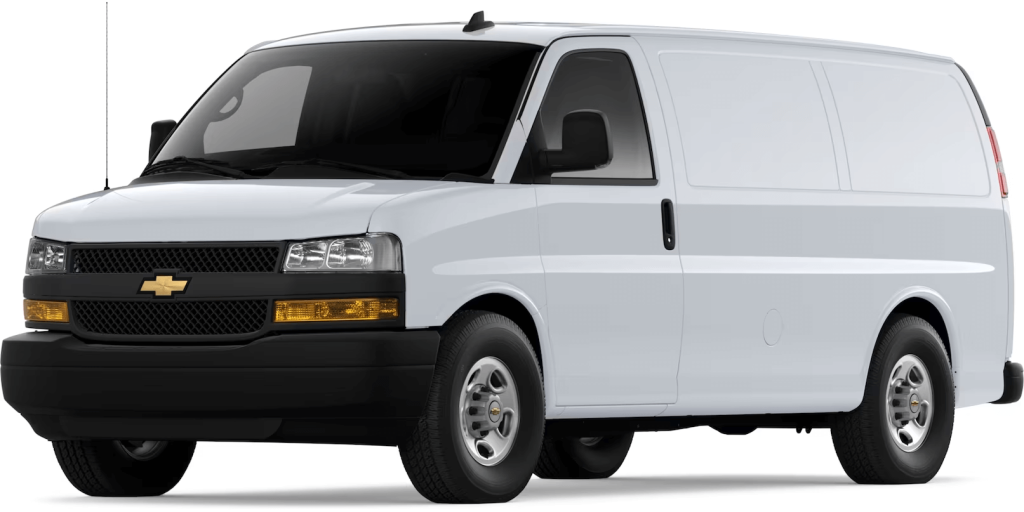
- Mercedes-Benz Sprinter Cargo Van The Sprinter’s TurboCharged 2.0-liter, 4-cylinder engine offers an impressive 188hp; paired with a 9-speed automatic transmission, this cargo van is more than capable of pulling its GVWR capacity of 9,050 pounds. The high roof model stands at 107.3 inches — plenty of room for staff to move around, with space left over for storage.
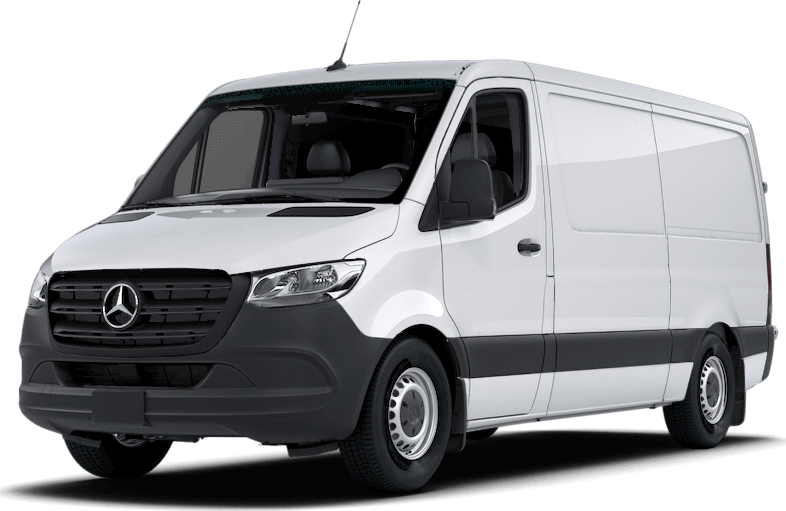
- Ford Transit Cargo Van Ford Transits are a popular catering van choice, including the 250 and 350 models. These come in a variety of body styles like 3D or 3D extended body and 3D low or medium roof height. The transmission is a 10-speed automatic with overdrive and a 3.5-liter, 6-cylinder engine. The GVWR capacity is 9,070 pounds, making it a great fit for carrying heavy catering equipment.
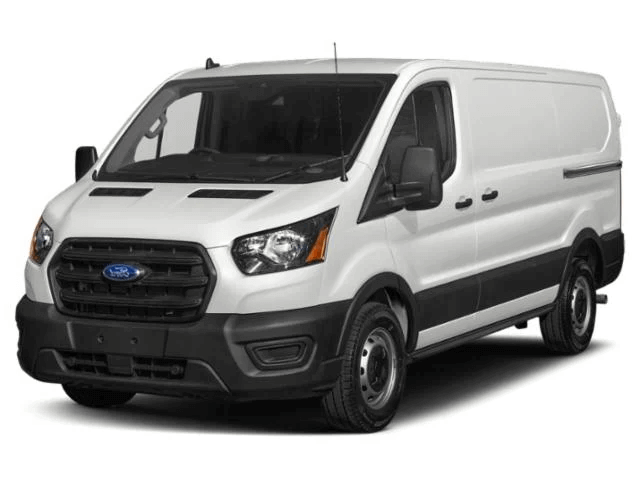
- RAM ProMaster Cargo Van With a 6-cylinder, 3.6-liter engine and 9-speed automatic transmission, this classic cargo van is available in extended body and high roof models, providing extra space inside while remaining relatively compact. The GVWR capacity is 9,350 pounds, offering slightly expanded carrying capabilities than other, similar cargo vans.
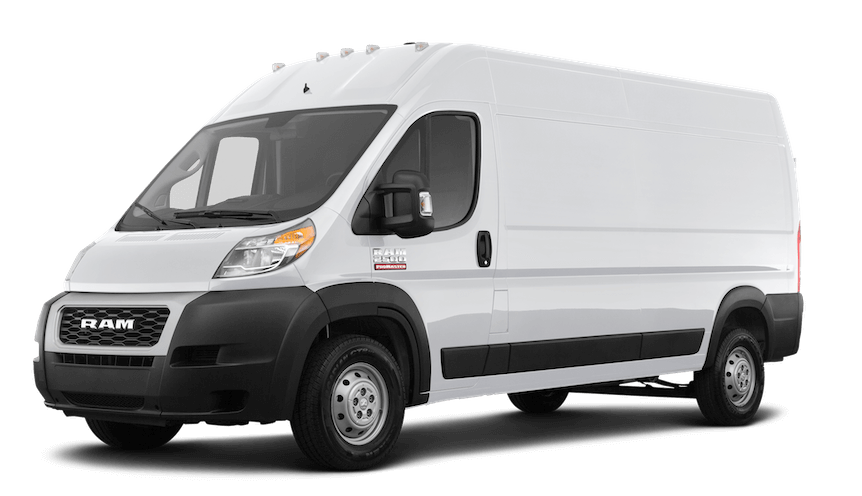
- Ford E-Series Box Cutaway Truck With a few upfits, this popular choice for food trucks is ready to serve. The Ford E-450SD 18’ Box Cutaway provides maximum storage and operating space, plus the largest exterior surface area for branded decals and wraps. The engine is an 8-cylinder, 7.3-liter with 6-speed automatic transmission plus overdrive. And with a GVWR capacity of 14,500 pounds, this truck takes the cake in terms of cargo capabilities.
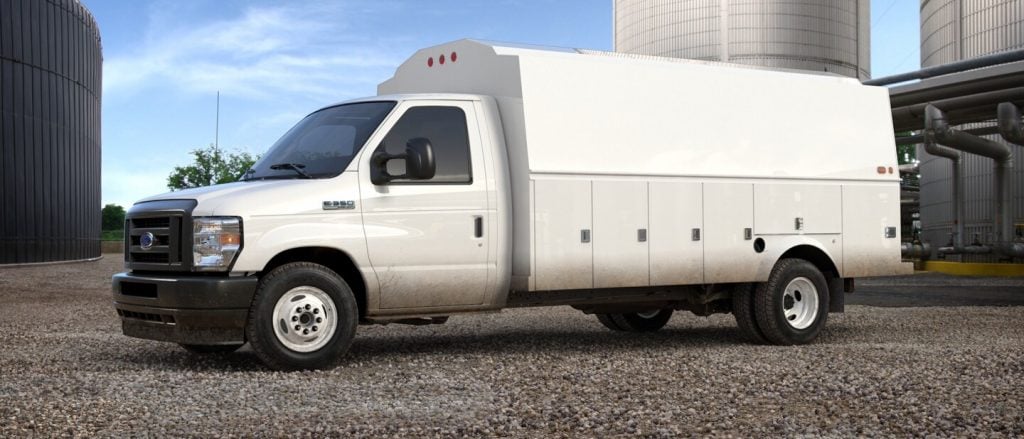
Not sure which vehicle or upfits would be best for your catering or food truck needs? Reach out to Merchants Commercial today, and one of our team members will be happy to help.

















